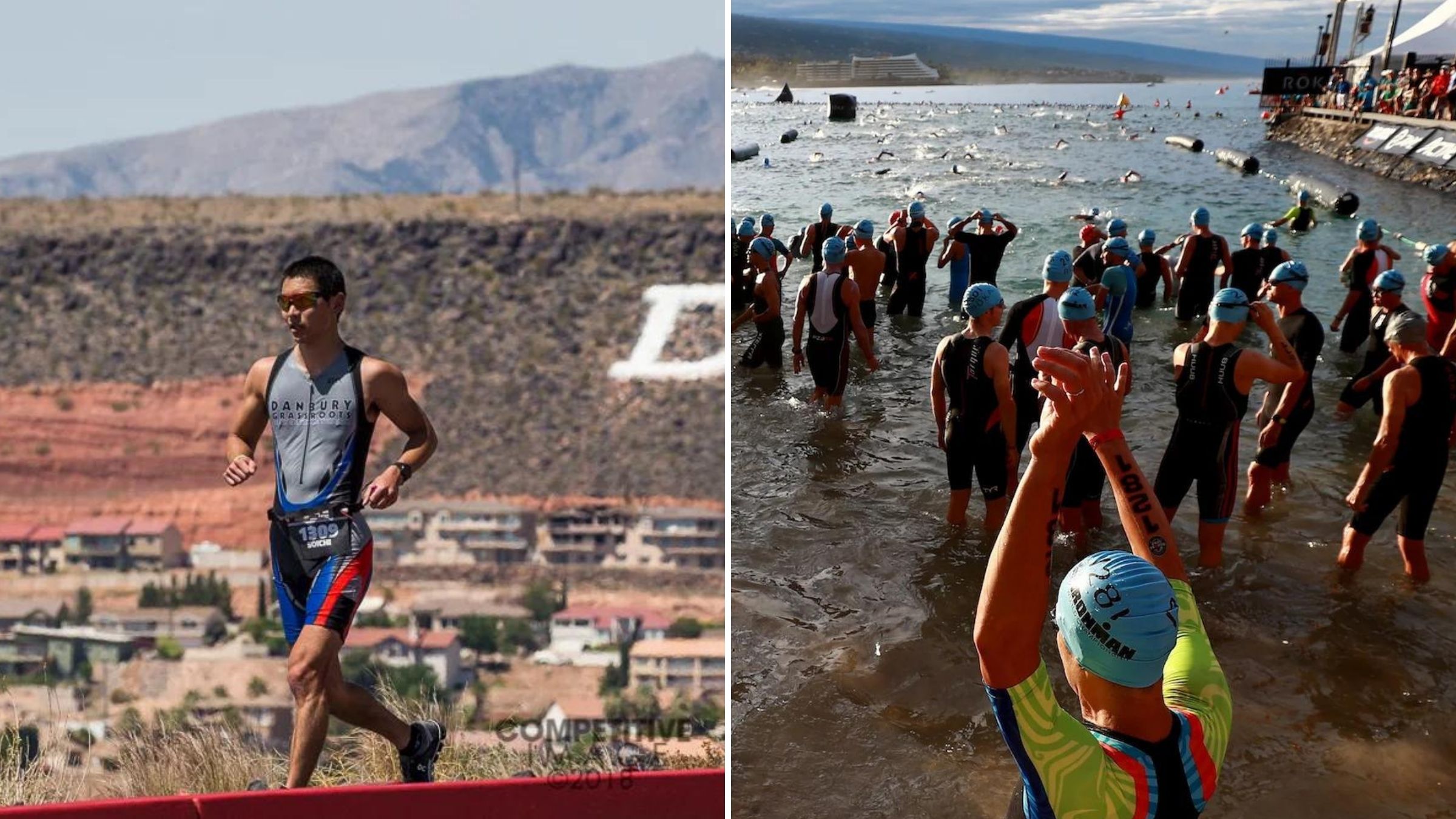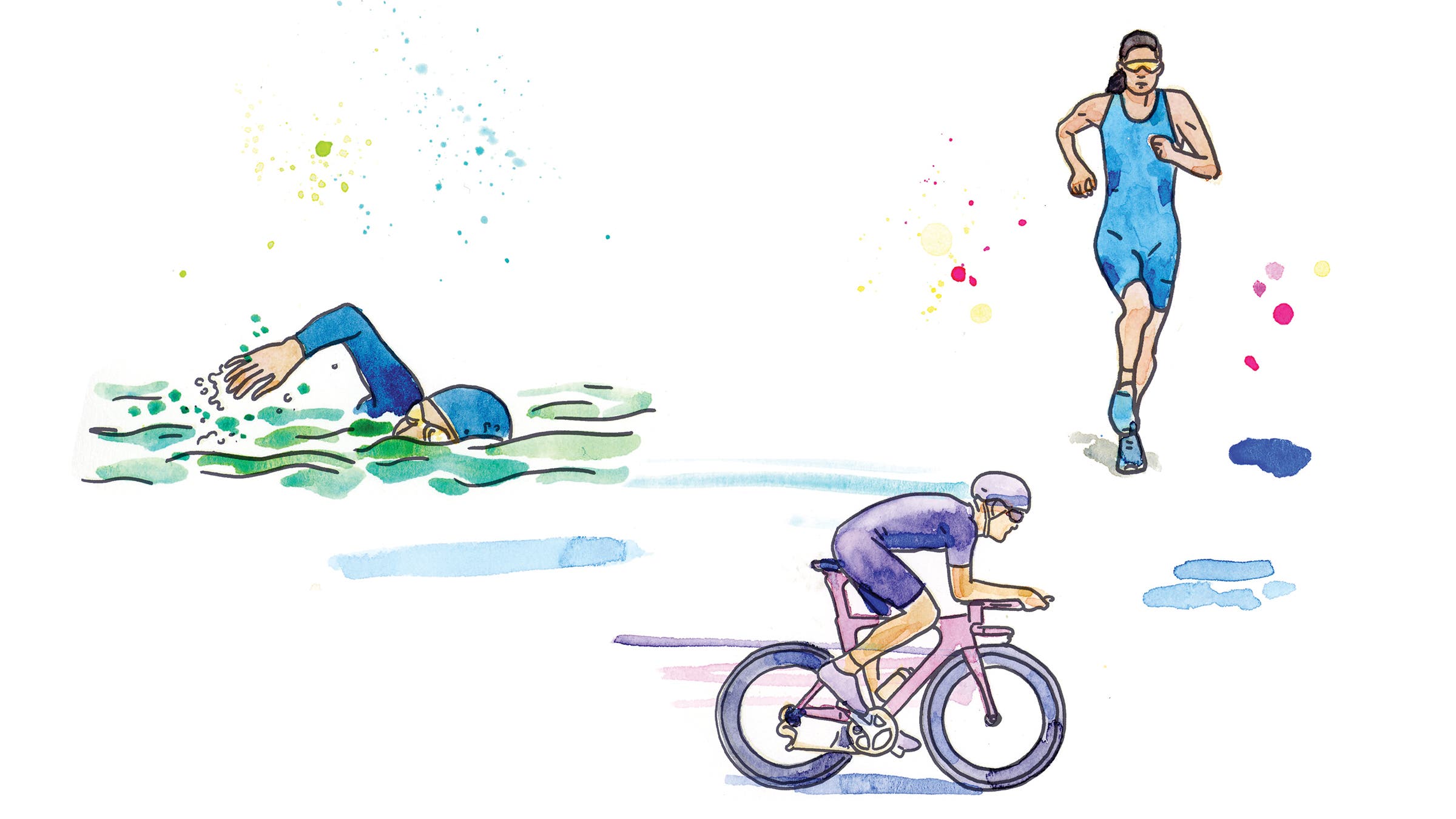How Age-Groupers Are Pulling Off the St. George-Kona Double

When Olympic champion Kristian Blummenfelt lines up for the 2021 Ironman World Championship in St. George in May, he’ll have an unprecedented calendar ahead of him—and he’ll likely already be on his second Ironman of the year.
Blummenfelt had planned to tackle an early season iron-distance race in March to test out some gear, nutrition, and pacing before the world champs (but ultimately did a 70.3 and training camp instead). He’ll then look to win his first-ever Ironman world title in Utah before tackling the sub-7 project in early June—where he’ll try to break seven hours for 140.6 miles. He’ll follow that up with some light World Triathlon racing in the summer and the second Ironman World Championship in Hawaii in October—hoping to become not just the first person to hold the Olympic and Ironman titles in the same year, but the first to win two Ironman world titles in one year. And then there’s a yet-undisclosed 140.6-mile “special event” in December.
Can it all be done?
“I think I can peak and recover for all of them,” he said.
While not many athletes on both the Kona and St. George start lines are looking to duplicate Blummenfelt’s feats, there are more than a few age-groupers with similarly jam-packed schedules. Between COVID deferrals and rollovers to this year, and now two Ironman world championships in 2022, it didn’t take much for a normal triathlete to end up with an abnormal race calendar.
RELATED: Everything You Need to Know About the Ironman World Championship in St. George
Amy Hite had qualified for Kona in 2020 and then again for 2021. When the Ironman-distance race was announced as returning to St. George, Utah, she thought she’d never done that one before, so why not make a trip of it for her and her husband, also a triathlete? Now, with all the calendar changes, she’s ready to line up for Ironmans in St. George, Wisconsin, Kona, and Arizona.
“Four is a good number. Five gets a bit excessive,” she said, having started with just one iron-distance, then doing two in a year, then adding and adding because there was always another race that sounded like fun. But when she did five Ironmans in 12 months, she said, that just got a little much.

How does a regular age-grouper make that all work?
“I think it has a lot to do with my training and being consistent,” she said. For Hite, it’s about the lifestyle. She loves to train and so it’s part of her everyday routine and a part of her and her husband’s vacations. She’s not going for an age-group podium at the world championship races, so she’s less worried about peaking for any one race. It’s just another weekend of big swim-bike-run hours—but this time with aid stations and in a new location.
“These are elite age-group athletes who simply love to race,” said Hillary Biscay, Hite’s coach and a prolific long-course athlete during her pro days—known for backing up Ironman races one after another. For the regular age-grouper she might have them be less aggressive in their training into St. George, and also take less of a break and then build through the season to Kona.
For those going for podiums and world titles, she agrees with Blummenfelt that it’s possible to peak for both world championships “as long as one doesn’t try to hold onto that peak fitness for five or six straight months.” The key is taking some down time as necessary at key points in between big races.
Blummenfelt might be on a different level and use fancier science than the regular age-grouper, but his takeaways are actually quite similar. He just loves training, and he uses key scientific markers to make sure he’s recovering well and ready to bounce back. As long as his mood and motivation are good, he doesn’t necessarily decrease volume; it’s more about periodizing training with variety and not going to exhaustion in any one workout.
“I think more important here is how much time is required between two races to perform at a world-champion level, and then strategic and tactical choices must be made from there,” said his coach Olav Aleksander Bu.
“Whether our strategy works out or not is yet to be determined.”
RELATED: Triathlete’s Guide for Managing Back-to-Back Races
Tips for Tackling a Packed Schedule
- Don’t stick to a traditional year cycle. For most triathletes, the season starts in April or May, peaks in the summer or fall, and then winter is off. But if you plan to tackle multiple long-course races in the year, then you might need to get creative about the timing of your peaks and valleys.
- Prioritize recovery. This may go without saying, but: The big question for multiple Ironmans is how quickly you can recover from one and move onto the next. Blummenfelt keeps an eye on things like heart-rate variability and blood markers, but mood and motivation are just as important.
- Be flexible. Anyone who’s ever planned to go for a recovery ride the day after an Ironman and then found themselves rethinking that plan knows you need to adapt as you go. Blummenfelt and Aleksander Bu talk each night to adjust and make changes—instead of just sticking exactly to what the numbers or plan say.
- Make triathlon part of your lifestyle. The reality is if you want to do that much training and racing in a year, you better love doing it.
RELATED: How Do I Know If My Recovery Sucks?